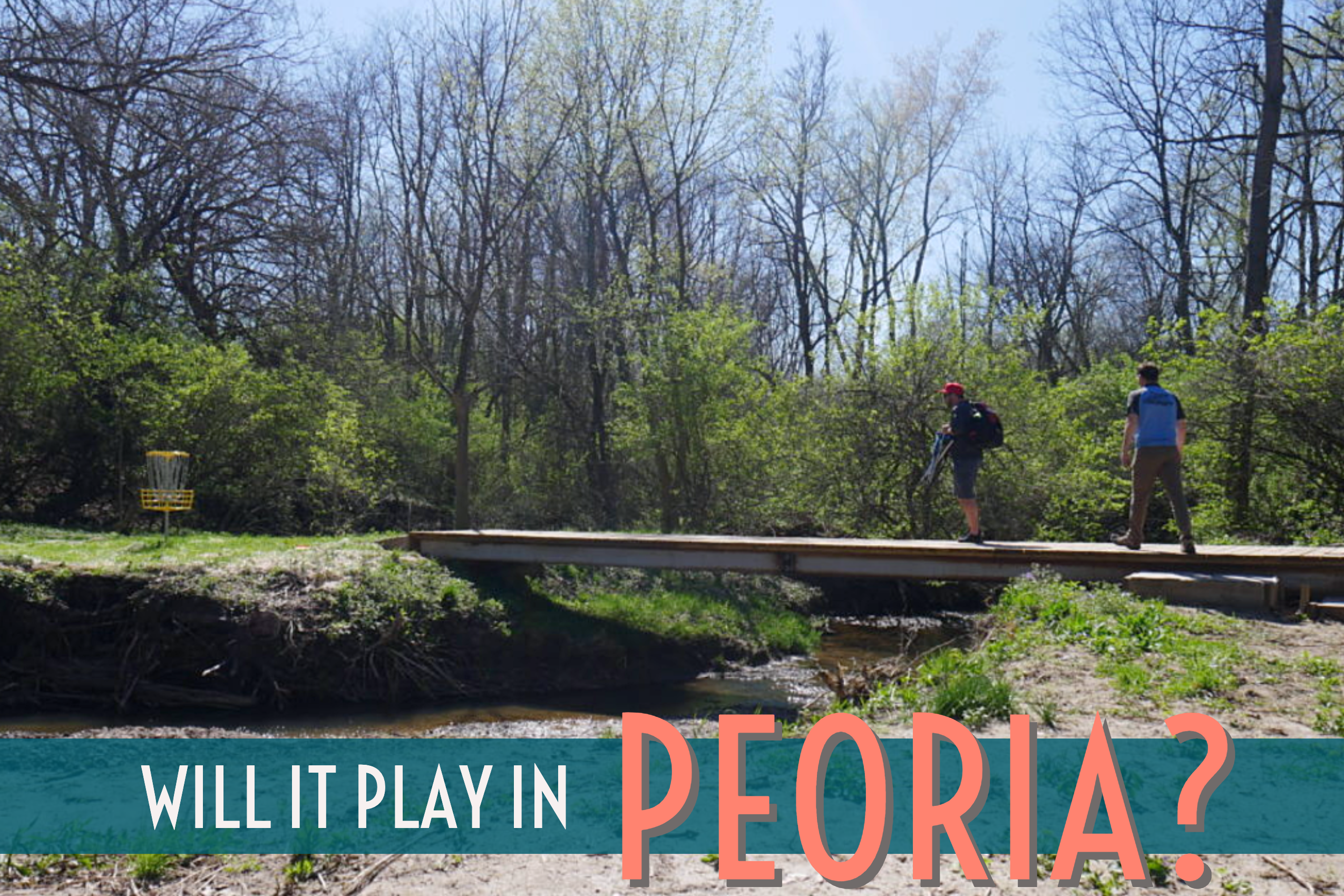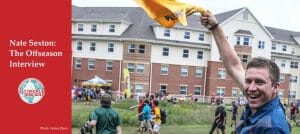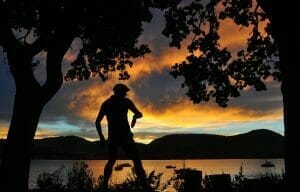It’s late April, and I’m driving across the Illinois River on the westbound span of McClugage Bridge northeast of downtown Peoria. After bisecting the city, this stretch of U.S. Route 150 meanders roughly parallel to Interstate 74 where it dead-ends in the Quad Cities on the Mississippi River. Head the other direction across the southern span — a beautiful steel truss, dual cantilever bridge built in the late ‘40s just after World War II — and you’ll pass through Terre Haute, Indiana en route to Louisville, Kentucky.
A sepia patchwork quilt of barren, muddy fields lines the roadside in both directions as the historically wet spring delays planting across the Midwest to the distress of its farmers. Welcome to America’s Heartland.
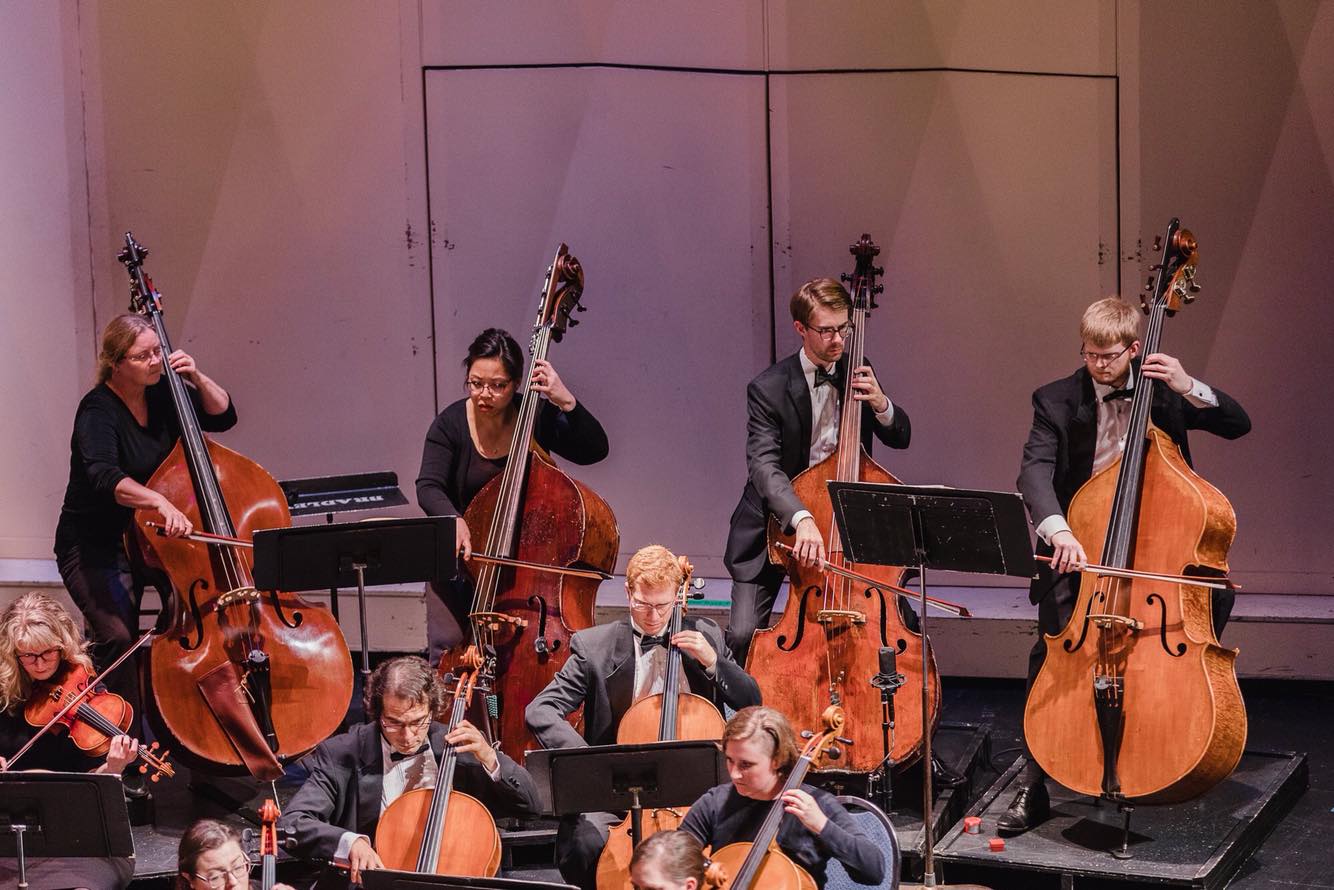
I play double bass in the Peoria Symphony Orchestra and make this drive from my home just outside of Chicago about 10 times a year for rehearsals and concerts.1 This weekend is our season finale. Leonard Bernstein’s Symphonic Dances from West Side Story headlines our New York themed program.
As always when I’m on the road for a gig, my Pound Octothorpe and Keen Targhee’s ride alongside my bass and tuxedo. I like to squeeze in a round on Saturday morning between continental breakfast and afternoon rehearsal, weather permitting. Northwood Park in Morton is my favorite in the Peoria area.
Lost in thought I register the trusses whipping by in my peripheral vision and occasionally steal a glance at the river. For those in the know, this crossing is a contemplative event. Nineteen years ago on April 24, 2000, three ironworkers died after falling 60 feet into the water below while renovating the bridge deck on the eastbound span. Fresh roses lay at the base of the nearby memorial.
At the bridge’s midpoint, my phone rings at interstate radio volume through the car speakers. I let out a few choice expletives regarding the frightening decibel level. It’s Nate Heinold. He can meet 15 minutes earlier than expected.
Anyone who follows the professional tour knows that Heinold is a polarizing figure… I want to separate the man from the myth.
Tournament directors aren’t often household names, but Heinold comes close. In addition to running the Ledgestone Insurance Open and the 2019 Professional Disc Golf World Championships, he currently serves as Secretary on the PDGA Board of Directors, chair of the Majors and National Tour Committee, and a liaison for the Competition Committee (chaired by Jay “Yeti” Reading).
Résumé titles aside, his omnipresence becomes more noticeable at the Ledgestone Insurance Open. The Open Division competes on a course he designed at Lake Eureka, the tournament’s title sponsors are his insurance company and disc sponsor Discraft, and he chimed in as a guest commentator for Central Coast Disc Golf from 2016 through 2018.
These criteria shouldn’t engender much controversy on their own. Disc golf relies on motivated, heavy lifters like Heinold because neither the title tours (PDGA NT and Disc Golf Pro Tour) nor the disc manufacturers have the infrastructure in place to fully run the show. Because tournament directors aren’t typically compensated for the countless hours they put into running tournaments, devoted stewards are necessary to grow the professional side of the game.
Of course, anyone who follows the professional tour knows that Heinold is a polarizing figure. Not for his commitment to the sport but because he brings his outspoken nature and strong convictions to bear on the tournaments he runs.
An avowed Christian, he traditionally includes a call to worship in the LIO caddy book, garnering mixed reviews from competitors depending on their religious outlook. It’s welcome and much-needed communion for some, unwanted proselytizing to others. Following the 2018 Open, he publicly excoriated a small minority of amateur players who smoked marijuana in their hotel rooms, asking them to never return to his tournament. It wasn’t the message that ruffled feathers but the manner in which it was conveyed.
Love him or loathe him, the same pathos that inspires Heinold’s strong social stances also compels him to give back. He’s raised in excess of $100,000 for the St. Jude Foundation over the past five years through tournament-related fundraisers and raffles. This year, he wants to cut a check for $40,000 between Ledgestone and Worlds.
Heinold says fatherhood inspires his philanthropy.“There are a lot of good charities out there, but helping kids with cancer tugs at my heartstrings,” Heinold says on the spring day we met. “If my 12-year-old or my 4 and a half-month-old had cancer and I had to go to St. Jude it would be hard, and that’s an understatement. Being able to help an organization like that, even in a small way, makes me feel better about myself.”
It seems to me that Nate Heinold is working for the overall betterment of the sport. I want to separate the man from the myth; to know him in a more meaningful way than the online comment pages allow. Today he’s giving me a sit down interview and a tour of the newly redesigned Northwood Gold.
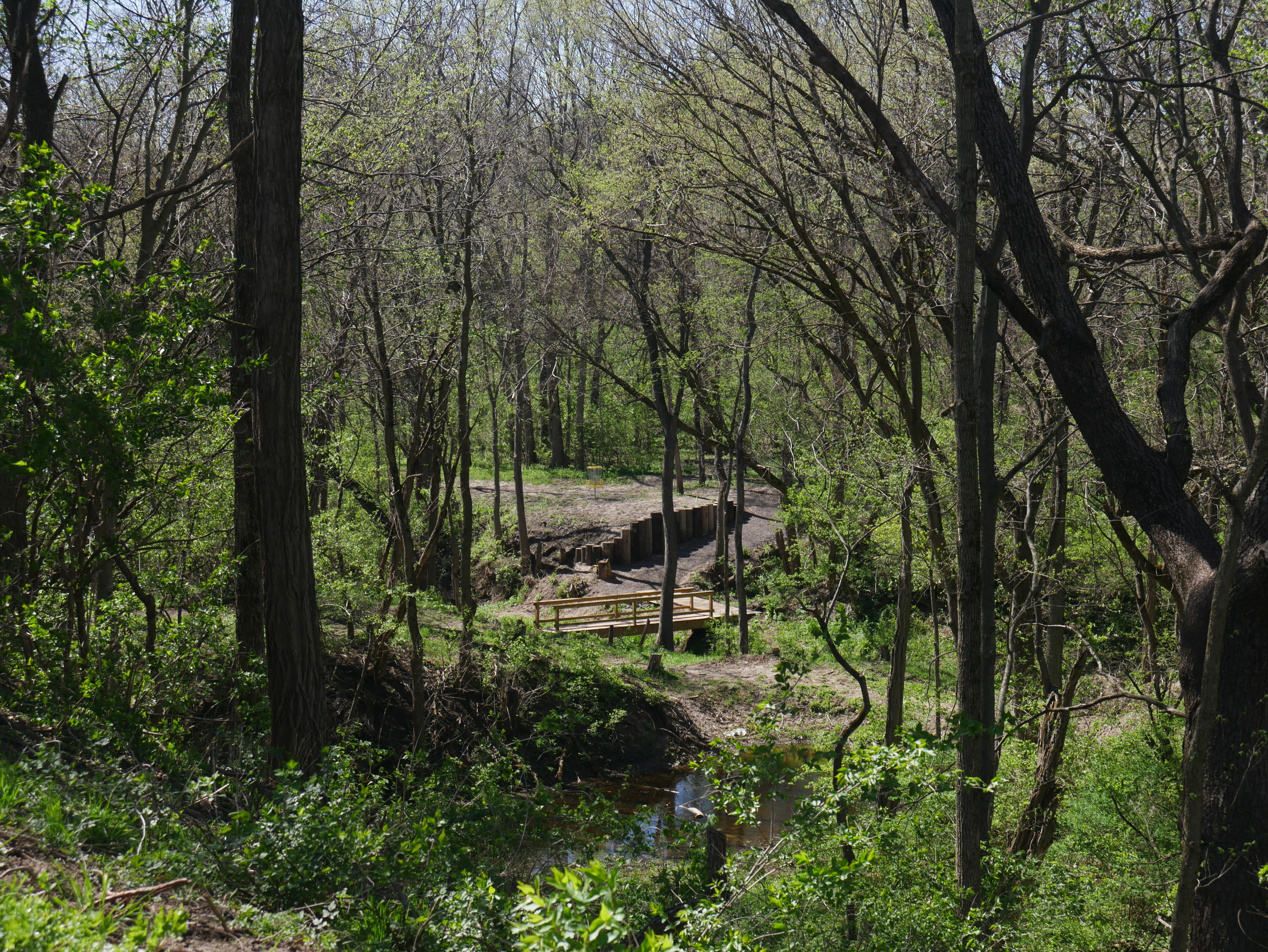
Peoria has long been regarded as a bellwether city, hence the old adage, “Will it play in Peoria?” As such, it seems an appropriate venue to judge the growth of professional disc golf as a spectator sport.
The disc golf infrastructure in Peoria is remarkably similar to Emporia, Kansas, the current mecca of the Midwest, and Heinold wants to position the Ledgestone Insurance Open as a yearly event to rival the Glass Blown Open and to top the success of the 2016 World Championships. If Peoria can rally the masses, they’ve got a leg up on Emporia.
Disc Golf Course Review lists 21 courses within a 25-mile radius of downtown Peoria compared to 19 in the Emporia area. Golfers will quibble over whose courses are better, but as someone who prefers carving lines through the woods, my money’s on Peoria. The Lake Eureka Temporary Course and Sunset Hills set up well for livestreaming and large walking galleries, just like the Emporia Country Club. Tree-filled Northwood Park is rugged and spectator restrictive with spotty cell reception, but offers a much-needed foil to Eureka and Sunset. The yin-yang pairing of open and wooded courses, each offering distinct sporting challenges, reminds me of the duo from the 2018 World Championships at Smugglers’ Notch: Fox Run Meadows and Brewster Ridge.
The eighth-most populous city in Illinois undeniably has the advantage when it comes to lodging, urban amenities, and transportation infrastructure, including an international airport. The population of the Peoria metropolitan statistical area including Peoria, Marshall, Stark, Tazewell, and Woodford counties was 373,590 in 2010 and is estimated closer to 380,000 today. Chicago — the third-largest city in the U.S. with 9.5 million living in the metro area — is less than three hours away. Emporia has just shy of 25,000 residents and Kansas City is the nearest metropolis, two hours down the road with a population of 2.1 million.
The Peoria Area Convention and Visitors Bureau, Enjoy Peoria, Village of Morton, Morton Park District, City of Eureka, and the City of Pekin already provide substantial monetary support for big disc golf tournaments. Ledgestone receives approximately $30,000 annually in the form of tourism grants and Pro Worlds pulled in an extra $25,000. Hotel taxes are the primary driver of these funds, which partly explains Heinold’s frustrated statements on marijuana last year. With time for reflection, his comments are more measured.
“We signed contracts with those hotels and blocked rooms at negotiated rates. The tournament is run through my name so I signed the contracts myself,” Heinold explains. “I am responsible for the wellbeing of the tournament and we get $25-30K in tourism grants primarily because of hotel taxes. That’s where most of the money comes from.
“We want to maintain our reputation and to keep those hotels happy. We want the communities here to be happy to have disc golfers. When the hotels complained, I should have paused for a day before I made my post. I should have said, ‘[If you play my event], please respect our hosts and don’t smoke inside the hotels.’”
Heinold wants Peoria to generate a festive atmosphere and on-the-ground buzz on par with Emporia, where the city rolls out the red carpet for the GBO on a yearly basis. Building strong community support among governmental agencies, local businesses, and area residents is crucial to his endeavor.
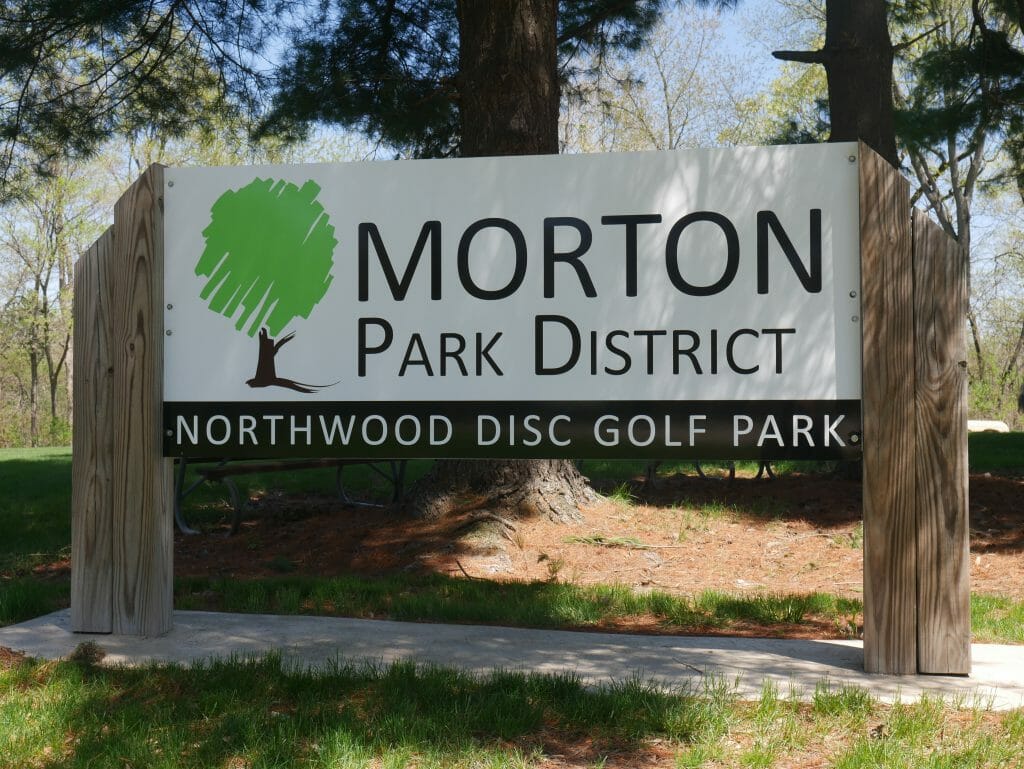
After checking into the hotel and dropping off my gear, I hop back into the car, pound some garbage food from the drive-thru, and head to the course.
Situated on the western edge of sprawling central Illinois farmlands, Northwood Park Disc Golf Course plays through a lovely 108-acre wooded park north of downtown Morton. Dubbed the “Pumpkin Capital of the World,” the village is home to a Libby’s cannery that cans over 80% of the world’s pumpkin. Driving by on I-74, several pneumatic pumpkin catapults are visible from the road and lay in wait for the yearly pumpkin festival. Morton is also home to a Caterpillar logistics center.2
I’ve never met Nate, but he’s easy to spot. He’s the Vice President of Sales for the Ledgestone Insurance Group and looks like a company man stepped onto the golf course. He is tall with short-cropped hair pushed up and back with gel, loud spoken, and clad in Discraft regalia. We exchange pleasantries, and he introduces me to Discraft Team Manager Bob Julio and Kip Taufer, a dedicated volunteer who has logged thousands of course maintenance hours here and at other area courses.
Two minutes after hopping out of the car, we tee off. Stiff from three hours of driving and with my stomach protesting the quality of my lunch, I clip an early tree and need to scramble for par.
While I size up my approach shot, Heinold gives me an overview of the changes: “The original course from the mid-2000s was a deuce or die course and was redesigned [under similar parameters] in 2012. When we got Worlds, we felt the need to enhance the course with more par 4s and par 5s.”
All told, six holes remain virtually unchanged from years past, seven were modified, and five are completely new. In 2016, the par 58 course measured 6,629 feet. The par 64 Gold Course is 40% longer and measures 9,299 feet.
The first three holes from the regular layout — a trio of relatively short wooded holes — have been scrapped from the Gold course along with the USDGC-inspired OB rope that was slung throughout the middle section of the course at the 2016 Ledgestone Insurance Open. Also gone: the weakest two holes on the course, numbers 7 and 12.
These are all great changes. Because tournaments start on the fourth hole, the picturesque finishing hole played out of order as the 15th in 2016. Ending the round on hole 18 proper restores the flow and provides an appropriate, stadium-style finish for the World Championships. And the artificial OB always felt out of character, like a tacet admission that the course wasn’t quite professional caliber.
“You know, I taught Paul McBeth to throw a Zone.”
The second hole is Heinold’s favorite from the original course and remains a signature hole in the Gold layout. Historically it played as a short par 4 and will retain that designation for FPO, but for MPO it’s been rebranded as a par 3.
Measuring in at 420 feet with a cliff dropping off to the pin, the change encourages the men to attempt a tricky right to left flex shot through the woods and down into the ravine if they want a look at the elusive birdie 2. Over two rounds in 2016 — the last time the men played in Morton — only nine players carded the deuce. If the UDisc Live stats hold water, about 50% of the field will take four or worse. Spotters, plural, are a must if players are going for the green.
Heinold skitters off into the left rough and is perched on the sidehill just short of the drop. Flicking a Discraft Zone on a steep anhyzer line, his overstable workhorse flexes out and dives toward the pin, nailing the cage with a resounding clang.
Back in the fairway he remarks to the group at large, “You know, I taught Paul McBeth to throw a Zone.” Chuckling, I think to myself, ‘If you’d thrown a controlled putter down the middle from the tee, like me, you’d have an easier up-and-down for par.’ Perhaps there’s something to be said for plainspoken hubris because I miss my putt from the creekbed short of the green and he cans his 25-footer.
The ensuing pair of par fours offers a chance to regain strokes lost relative to par on the previous hole. Hole 4 was the hardest in 2016, averaging plus 0.36. In 2016 it played as a daunting 402-foot tunnel shot with bunker-style, wooded rough left and right. Now it’s a 540-foot par 4 and plays through a more open stretch of parkland alongside Hirstein Cemetery (whose graves dating back to the early 1800s) before hitting the woods.
A putter approach to the short tee will be a common play, leaving 309 feet to the basket, but you’ve got to stick the landing zone in order to have an angle to the green. Heinold was slightly off, attempted the hero shot, and found himself 40 deep in the left rough with a pile of debris blocking his sightline to the basket.
Pitching out of the woods with his Zone again, Heinold starts trash-talking his friend Bob Julio. Heinold trails Julio by one after three holes and is trying to channel his inner Jordan. Out of earshot, Julio whispers to Taufer and me, “I talk better crap than Nate, but he plays better when he runs his mouth, so I let him.”
The constant banter doesn’t really bug me because Heinold swiftly alternates between teasing and honest praise. He reminds me of a bassist I knew in college — a Mormon kid with a well-earned ego — who would needle the rest of the section from the first stand, but always super politely and without profanity. To the point, Heinold later tells me, “You’re never going to hear me swear on the course.”
“At Northwood, the lines are tight, but you won’t say ‘that tree shouldn’t be there’.”
Heinold aspires to be a role model for new players, especially children, hence the G-rated language. Inspiration comes from his own mentor Greg Nettles. Heinold was 14 years old when Nettles introduced him to disc golf and gave him his first disc.
Northwood Park Disc Golf Course wouldn’t exist without Greg Nettles.
The unheralded course designer from Washington, Ill. designed and installed the original course in 2001-02, cutting the fairways and personally paying for all of the baskets, concrete tee pads, and tee signs. He redesigned the course a decade later in 2012 to meet the demands of an evolving professional scene and in response to rapidly changing disc technology. Nettles was called back into action earlier than expected following Peoria’s successful bid for Worlds in 2017. A graphic designer by trade, he also illustrated the hole overviews in 2012 and updated them for Worlds.
As a teenager, Heinold helped install the original version of Northwood and proudly remembers suggesting the basket location for hole 14 (Gold 9). He attributes his preference for demanding fairways with clean lines to Nettles’s influence.
“I don’t like fairways that have trees dotted in the middle and the lines are fluky,” Heinold says. “At Northwood, the lines are tight, but you won’t say, ‘That tree shouldn’t be there.’”
The most significant changes to the course come after the turn, including all five new holes. Only the closing duo of 17 and 18 remain unaltered. Countless hours went into designing and clearing new sections of the course and Heinold is quick to give credit where credit is due: “Northwood has a special place in my heart, but it’s Greg Nettles’s baby.”
Joining Nettles on the design front for Northwood Gold, chainsaw in hand, was one of our playing partners, Kip Taufer. Unassuming and eminently friendly, Taufer has volunteered more hours toward the Worlds redesign than anyone else at Northwood, helping to plan and clear the new fairways for holes 11-15 as well as installing the infrastructure that makes them safe, like bridges and retaining walls.
I recall seeing Taufer on the course clearing the green for Gold 7 in 2018 before we met. He bags a bevy of MVP overmolds and clearly enjoyed gauging Bob Julio and my reactions to the course more than he cared about his own score.
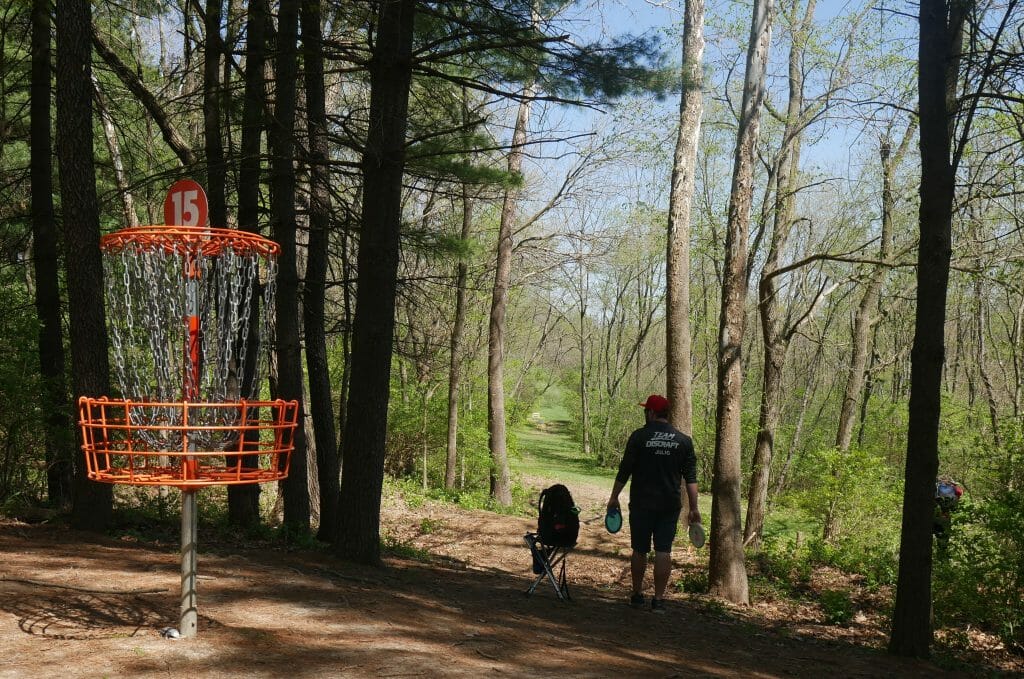
Gold 11, the first new hole, traces its fairway through the woods running parallel to hole 12 on the standard layout. Taking a bird’s eye view of the pair illustrates in a microcosm the growth of the course from amateur to professional status. The latter is a touchy, 250-foot flare hyzer with a low ceiling, emblematic of the sub-300 foot holes that characterize par 54 courses of yore. Eleven Gold cuts through the woods for 380 feet, bending subtly from left to right into a tight green, and is clearly better suited for today’s pro. It’s also the appetizer for the meal to come.
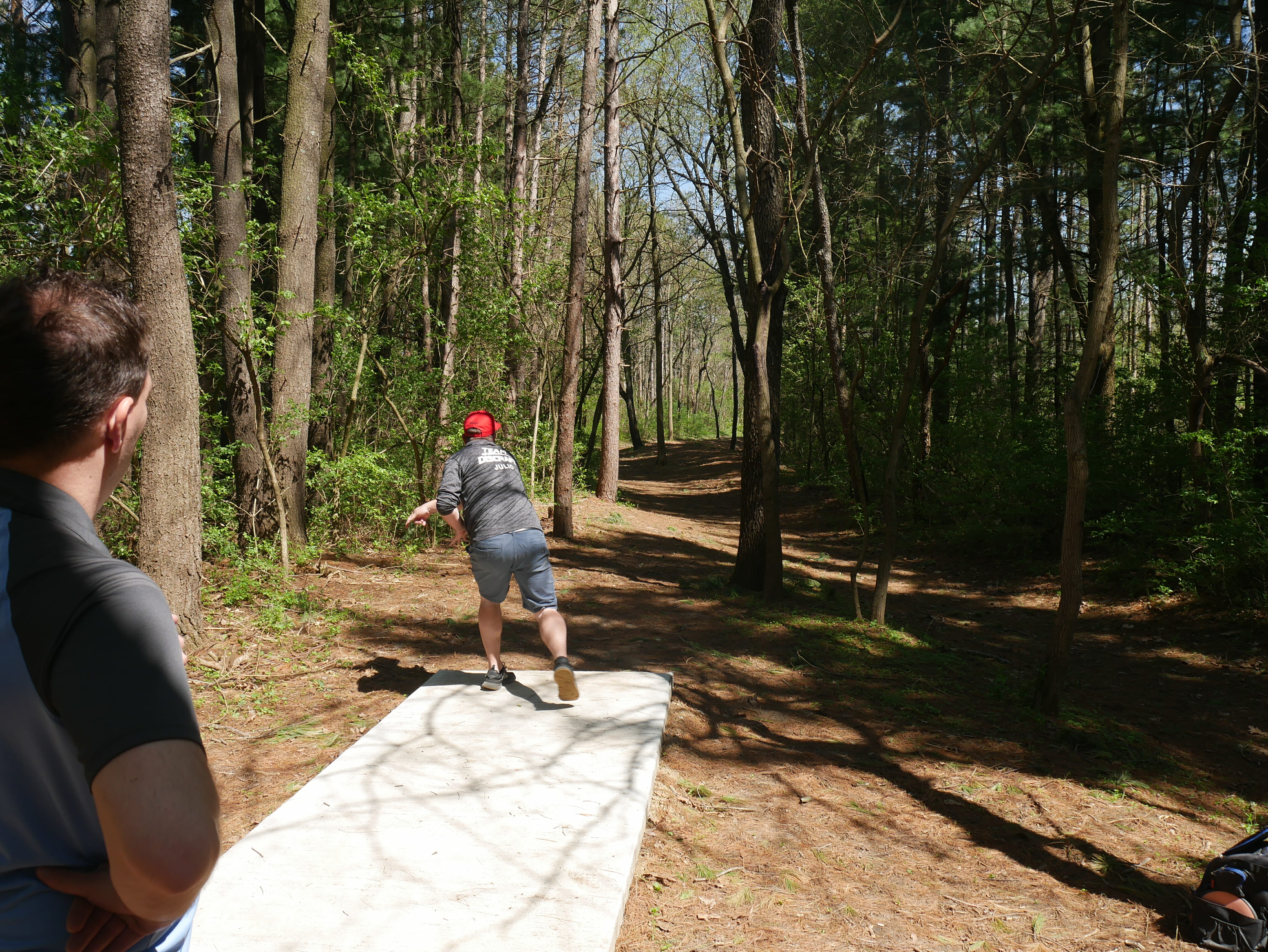
The main course: Hole 12. A true par 5, it requires three excellent shots to earn a birdie look. Measuring in at 1050 feet — “nearly two-tenths of a mile,” as hyped by Heinold — it plays considerably longer because the second half of the hole is massively uphill. Paul McBeth recently tweeted, “Hole 12 at Northwood Gold may be the best hole of all time!”
Believe the hype.
Hole 12 at Northwood Gold May be the best hole of all time!
— ؚPaul McBeth (@Paul_McBeth) June 17, 2019
The drive curls to the right, slightly downhill and through a stand of trees that cinch the fairway like a corset a hundred or so feet off the tee. A perfect replica of a parked shot from the previous hole would be ideal. On the box, Heinold wonders whether two trees down the fairway should be removed — they shouldn’t — and bets there will be more double bogeys than birdies on this hole during Worlds. I’m the only one who hits the gap, but I’m also short of the corner.
As my playing partners tramp through the rough looking for their errant drives — I’ve claimed journalist’s prerogative to remain in the fairway and log my initial reactions to the hole — a train rumbles by in the distance, sounding its horn. Faint conversation and twigs snapping underfoot interrupt the twittering of nesting birds and the wind rustling the leaves. Observing the budding trees I note that the foliage will be dense come summer, making the course that much harder. Heinold expects even par to garner a 1015 rating for the big dance and the preview tournaments support the claim. At a recent preview event in May, 2-over par came in at 1021. Heinold tells me that he “would be shocked if anyone shoots double digits [under par] at Worlds.”
I overshoot the ideal landing zone on my second shot and sail into the creek around the bend. Fortunately, this obstacle plays casual. The view as you turn the corner is truly awesome. You can see the pin 700 feet off in the distance, but it feels so much farther due to the incline. The makings of a massive pedestrian bridge lie in the rough to my left: girders from the old, nine-spine Manito Road Bridge, which spanned the Mackinaw River south of Peoria near Pekin, and lumber. Lots of lumber.
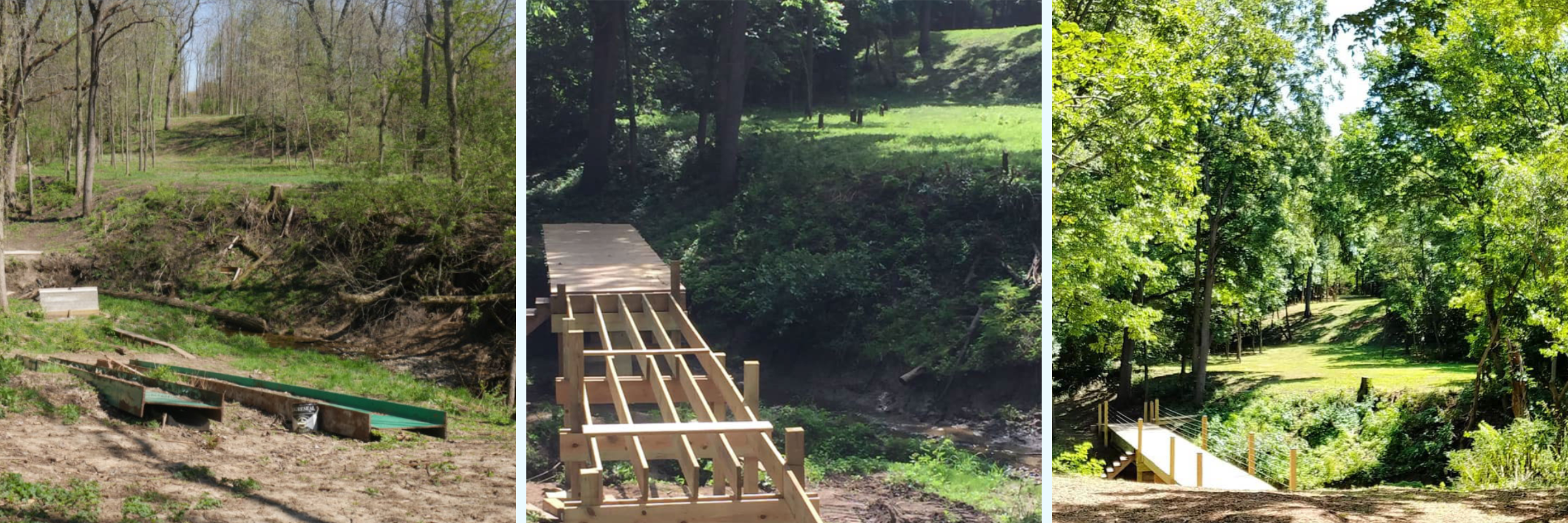
The far bank of the creek is sheer with a small plateau just over its berm. Another steeply graded rise precedes the final portion of the fairway. Once you achieve the second ridge, you must navigate a narrowing, uphill tunnel to the pin. A deep ravine runs alongside the second half of the fairway to the left, gradually pinching in nearer the green. Consider your disc lost if you take the plunge. It’ll play OB during the tournament. Right isn’t much better, flanked with the tree-filled rough that defines so many fairways at Northwood. I walk off the hole with a 6. Nate logs an 8. Bob and Kip card 10s.
Once upon a time I was 976-rated, the same as Heinold, and picking up 10 strokes on the card has my competitive juices flowing.3 I need to make up two strokes on Heinold to finish tied.
Heinold and I both rattle off three consecutive pars. I lose the box to Julio on hole 14 after he cans a miracle putt for birdie from the rough short of the massively fortified green. It’s his second and last birdie of the day after starting off his round 1-under. The best score the rest of us can manage on the day is par. Even though he keeps it light, I can tell Heinold’s counting strokes too when he casually asks my rating as we prepare to drive on 16.
The second par 5 is only 10 feet shorter than hole 12 but should yield more birdies than its 1000-foot brother. It only played 0.12 strokes under par in 2016 as a par 4, after all. The difference between the two is that on hole 12 the sub-1000 rated players will lose strokes to the 4-digit crowd, whereas here the 1000-rated pros can pick up strokes on the field on 16.
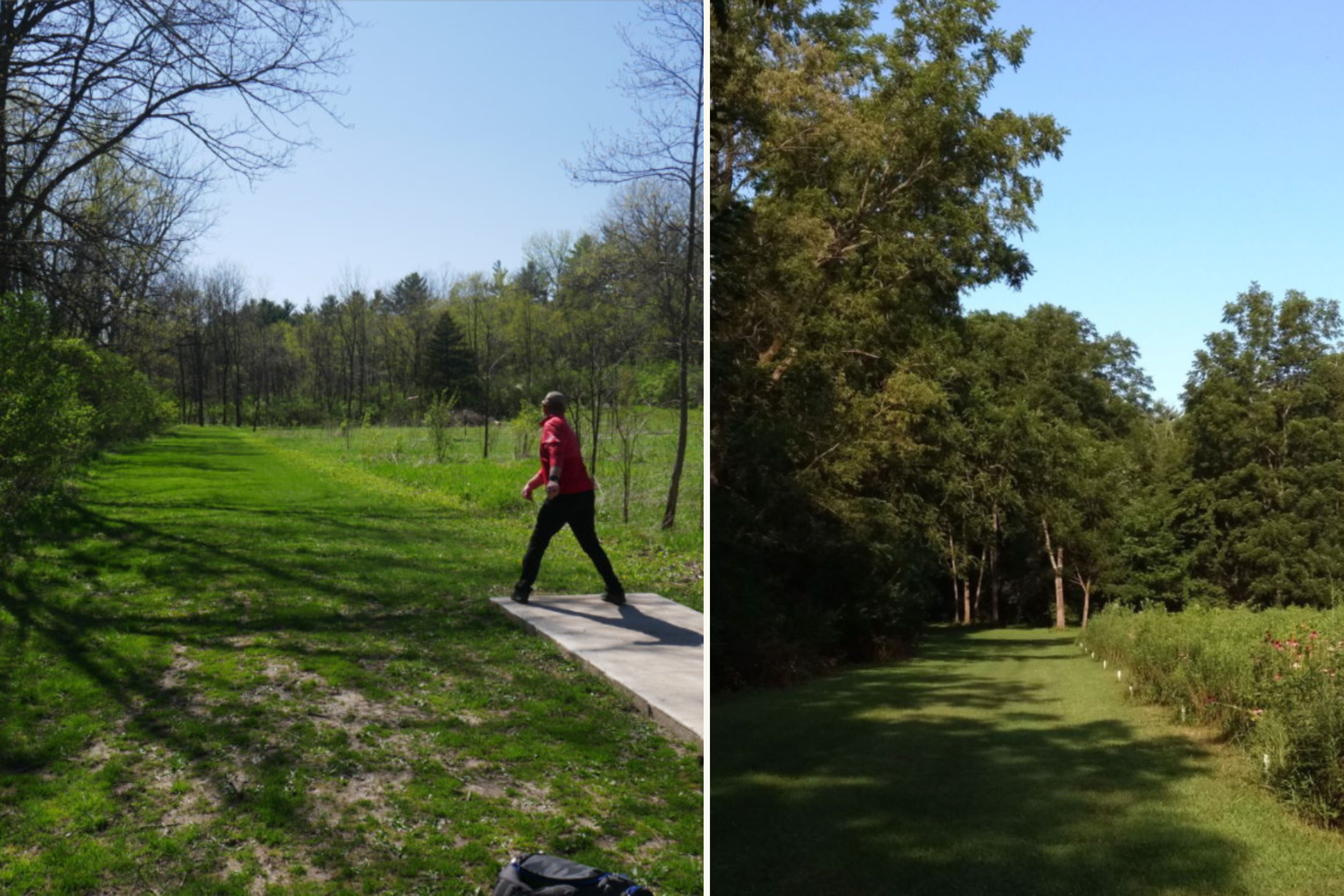
The beauty of this hole is that requires three distinct shots. The most obvious choice from the tee is something that moves right to left over the OB prairie and sticks the landing zone straightaway at the mouth of the woods. Drives need to stop on a dime because the trees lining the left side of the fairway and past the long grass on the right are jail. Next, a relatively straight tunnel shot encourages gentle flex lines and hyzer flips. Finally, a long approach into the hillside green. Depth perception can be tricky and the wind tends to swirl atop the hillock where the basket perches.
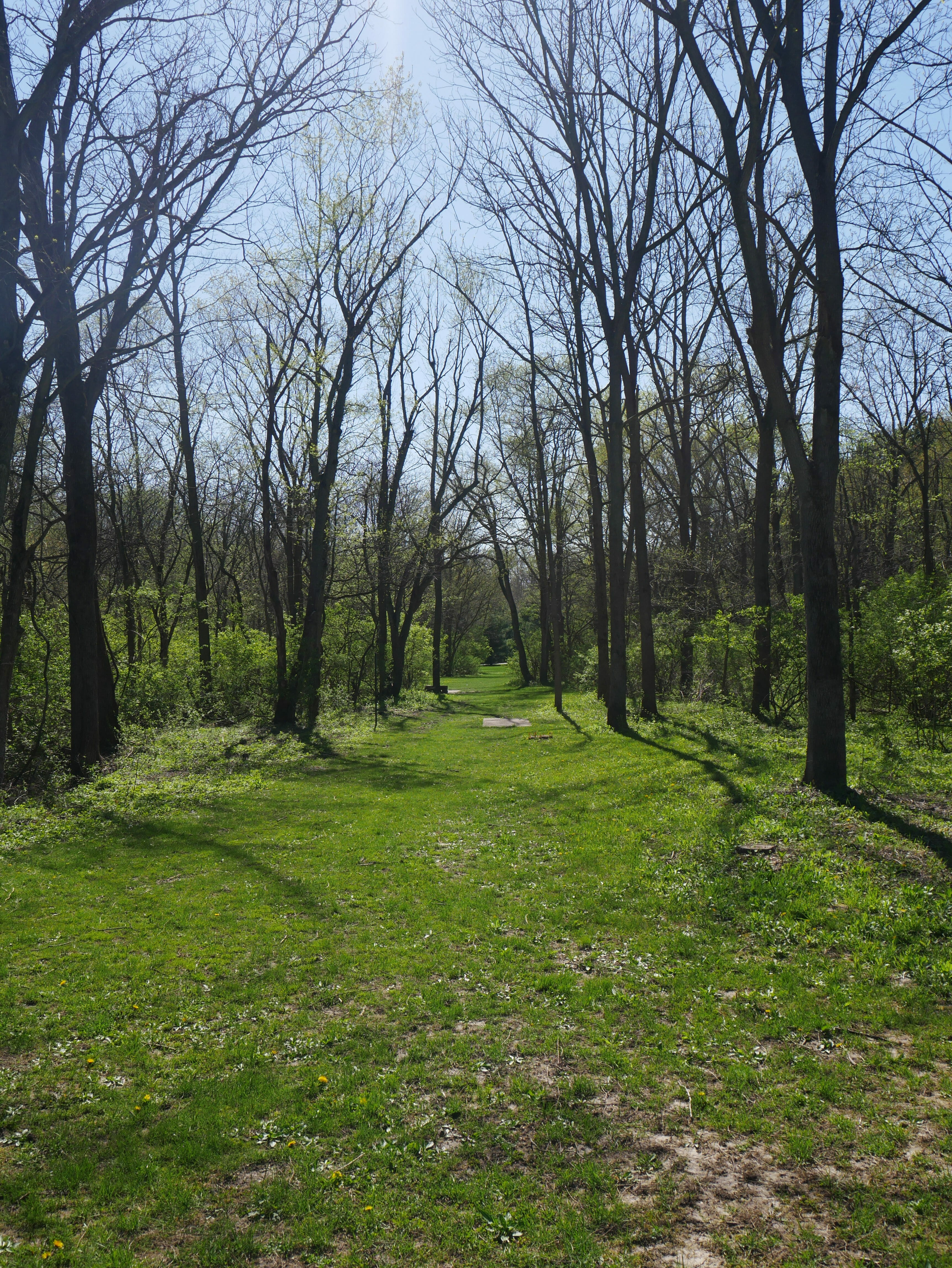
I throw a perfect drive before pulling my second shot into the right rough where it hits a tree just off the fairway and kicks hard into the thick stuff. After failing to pitch out on my first attempt, I pound my knuckles into the ground in disgust and inadvertently draw blood on a sharp rock buried beneath the moss. The scar is still there three months later. You never see McBeth come away bloodied after giving the earth a love tap. Must be that 4X love. Or maybe he’s a 1057-rated ground pounder, too.
Things snowball after my duffed third shot and I end up building a triple-bogey snowman. Amazingly, everyone else double bogeys and I only give up one stroke to the card.
Hole 17 played as the second hardest hole in 2016 averaging 0.32 strokes over par. Steeply uphill, it features a devilishly narrow gap and challenging rough on both sides of the fairway. But if you lose strokes relative to par on 17, you can gain them right back on 18. The picturesque closing hole yielded a 44.5% birdie rate in 2018. Fail to card the birdie and you’re likely losing strokes to your competition.
Unfortunately for me, I finish bogey-bogey and lose to Heinold by five and Julio by two. On the plus side (literally), my 14-over par 78 would be rated just north of 950. Northwood Gold is not for the faint of heart, but it’s a helluva good time.
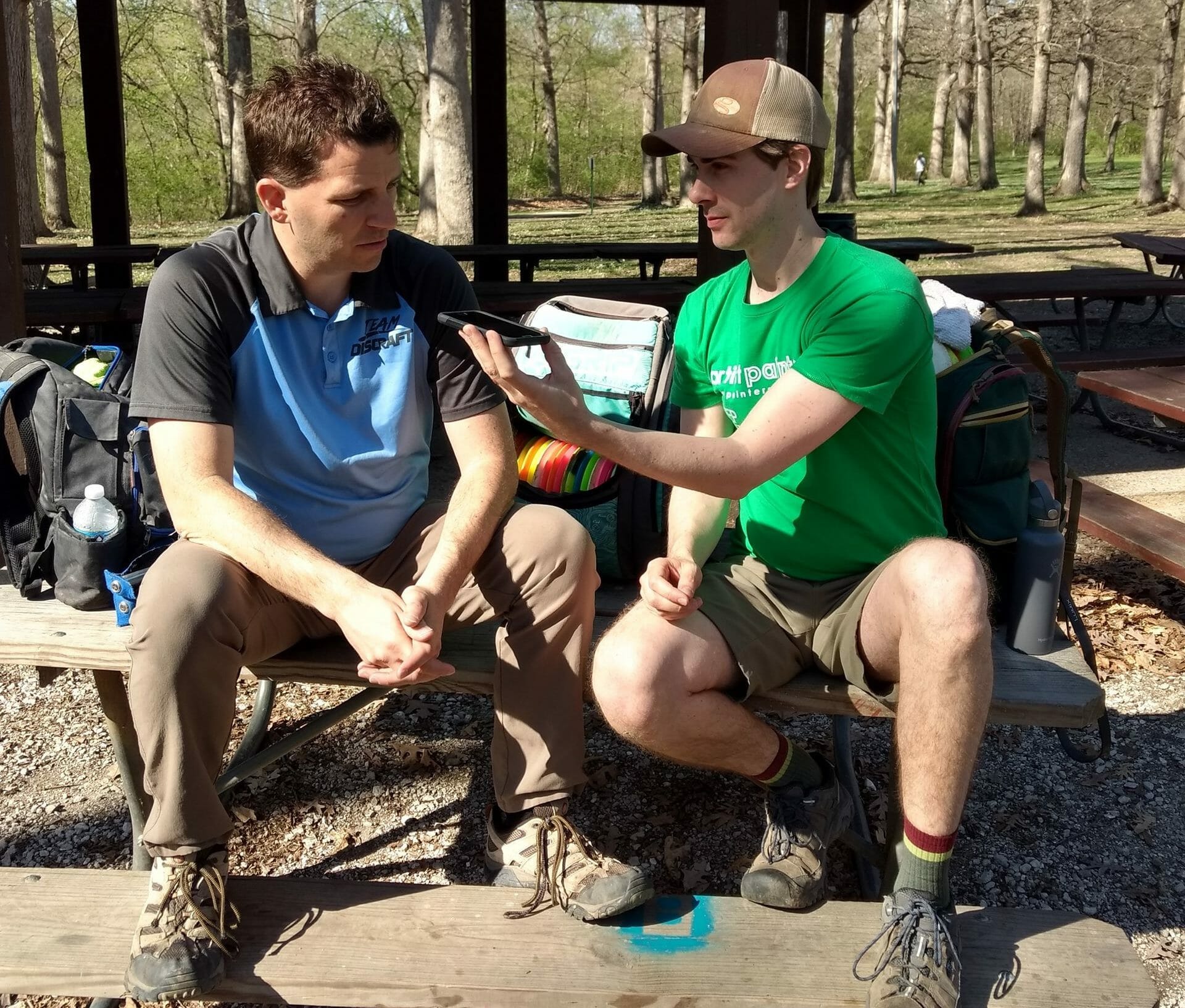
Julio and Taufer hit the road immediately following our round and I’m left sitting atop a picnic table near the practice basket with Nate. Our lips and faces are windburnt from the steady 18 mph breezes that swirled through the course and our noses have those rings of dried snot like you typically get from a late fall run, not a 60-degree spring day. For 45 minutes I pepper him with questions. He’s running the Illinois Amateur State Championships tomorrow and Sunday, but I never get the sense he’s in a hurry to end our interview.
I ask him what running a successful World Championship would mean to him personally.
“I think there was an article in the Journal Star five years ago [where I mentioned] wanting to run Worlds, so it’s been on my mind for a while,” Heinold says. He references another behind-the-scenes mover and shaker as he continued, “Jussi Meresmaa has talked about Worlds being part of his legacy. We want people to come [to our tournaments] and be blown away. I’ve played Smugglers’ Notch. I’ve played Pittsburgh. I’ve played Charlotte. I want to beat all of those venues. I want people to say that this was the best Worlds. If they don’t? Well, I’ll have room to improve when I run the 2030 World Championships.”
“I want people to say that this was the best Worlds. If they don’t? Well, I’ll have room to improve when I run the 2030 World Championships.”
While we chat two young men roll up with Zuca carts, crack open a beer apiece, and start in on the Disc Golf Strong warm-up routine before getting in some putting practice. The inherent contradictions in their demeanor offer a glimpse into the conflicted state of the sport, caught somewhere between athletic endeavor and beer sipping pastime. Where professional looks — fancy bags, carts, Adidas Terrex shoes, and collared shirts — clash with the disregard for local substance prohibitions.4
In on-and-off communications with Heinold over the months following my course tour in April, he tells me that volunteers have logged more than 1,000 hours on the course, including one workday that attracted 32 local golfers. The gap on hole 10 was made wider, hole 12 was cleaned up and feels “less claustrophobic” now, truckloads of mulch rolled in, and bushels of cleared briars and honeysuckle rolled out. Recent updates to the Ledgestone Insurance Open Facebook page show the course really coming together.
All we can do now is wait. Will Northwood Gold play harder than Lake Eureka? Will Heinold’s prediction that nobody will score double-digits under par on the Gold track hold water? And will spectators take the cue from Finnish fans and turn up en masse to witness champions crowned at the longest-running PDGA Major? Hopefully, the answer is ‘yes’ on all counts.
Fun fact: founded in 1897, the PSO is the 14th oldest professional orchestra in the United States. ↩
Peoria was the corporate headquarters of the construction machinery and equipment company until 2017 when they relocated to Deerfield, a northern suburb of Chicago, but Caterpillar still employs nearly 12,000 people locally. ↩
In April, Heinold was rated 976. Today he’s rated 973. ↩
Alcohol is strictly forbidden in all Morton parks. ↩
More Features
Nate Sexton: The Offseason Interview
We tracked down Nate Sexton for the third installment of our Offseason Interview series and were treated to a healthy mix of veteran reflections on the game and his signature deadpan humor.
Having A Go: Everything You Need To Know About Disc Golf In Australia
The GOATs of Disc Golf: Player Ranking [Pt. 1]
NOTE: This article, originally published in December of 2020, has been updated to include 2020 year-end data and corresponding analysis.
The GOATs of Disc Golf: Career Points [Pt. 2]
NOTE: This article, originally published in December of 2020, has been updated to include 2020 year-end data and corresponding analysis.
